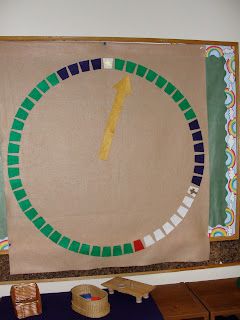Wow, I really didn't see this one coming.
Everything I've read about Montessori is non-testing, but there is some kind of district-wide testing this week. I know it isn't unique to the public Montessori, because one of the parents of a first grade student at the the private school Sean attended told me there were timed math tests for the Lower El.
I'm not a fan of testing. I won't go into all of the reasons because I think I'd be preaching to the choir. I also don't like grades, and I've made that more than clear during our site council meetings and in talking with teachers at the school.
So I knew these tests were coming, but it didn't occur to me that they would be a big deal to Sean. Boy, was I wrong. I forgot they were this week, and he was out of school Monday for Martin Luther King, Jr. Day and also on Tuesday for a teacher work day.
Yesterday he had tumbling at 8 a.m., so the day started an hour earlier than normal. I picked him up from school and he mentioned that he had tests and several times said his teacher said she couldn't repeat, so they had to get it on the first time.
We came home and he played with his friend. Chuck came for dinner before he had to go to a meeting and we all ate dinner together. Sean's friend stayed late and I was working and kept thinking someone would come over to get him soon. I looked up and it was 8 p.m. Wow. So I made the friend go home and quickly shuffled Sean off to bed. We read some poetry together from Shel Silverstein's "Falling Up" and then I tucked him in. He was restless. I sat with him for a while and then said goodnight.
Chuck came back after his meeting and Sean was still restless. He was in and out of bed many times before Chuck arrived, and said he couldn't sleep. "I hate tests!" he yelled. I tried to talk to him about the test and encourage him to just do his best and not worry about it. After several times of putting him back to bed and attempting to calm him, Chuck took over. He is so patient and kind and gentle. He's a Godsend.
Chuck came out of Sean's room and told me he tried to explain that sometimes tests are the way teachers figure out what they are supposed to teach. He wasn't sure it helped. It probably did a little, but Sean was wound up.
I think it was probably 11 or later when he finally fell asleep.
I walked in with Sean to class this morning so I could talk to his teacher and let her know this is a big problem for him. She is great too, and asked him what they could do to make it easier for him to get through the testing. I think just having her validate his feelings about the test, and her willingness to help him find a way to calm down did wonders.
When I picked him up this afternoon she said they put a Star Wars book beside him while he took the test so he could look at something that made him feel happy if he got too anxious or worried during the test. She said he also seemed to realize he was very prepared for the test and it wasn't as big of a deal as he originally thought.
When I asked about it on the way to the car he said it wasn't bad, and some of it was really easy. He admitted some words he just didn't get so he drew whatever he thought should be there.
He hasn't mentioned it since we've been home, but he usually opens up with his feelings at bath or bedtime.
But I Don’t Want to be the Policeman!
1 week ago









